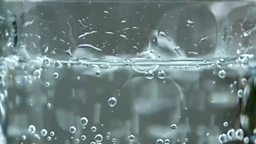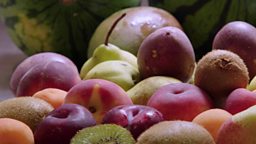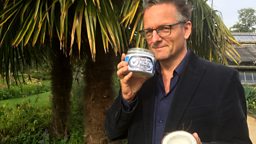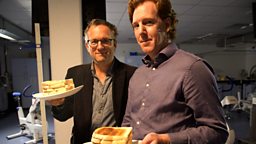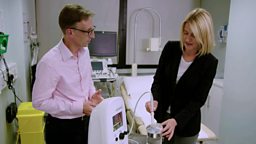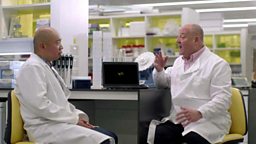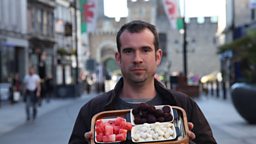Whatâs the best way to get Iodine in your diet?
There are many vital nutrients we need from food. Some are well known - such as iron or vitamin C - but there is another, which is rarely mentioned despite a widespread insufficiency of it in our diet: iodine.

Iodine is essential to our health. It is used by the thyroid gland to produce hormones that keep all the cells in our body working normally. Having low levels of these hormones has been linked to weight gain, fatigue and mood swings. Iodine is also crucial during pregnancy and for young children, as it is key to brain development.
The UK currently ranks in the top ten most iodine-deficient nations in the world. A study of over 700 teenage girls across the country found that more than two thirds had insufficient iodine.
One reason could be down to a key change in our diet in recent years. In the UK most dietary iodine comes from drinking cow’s milk, but consumption of milk has fallen dramatically over the last decade.
So what foods can provide us with sufficient iodine and are they as good a source as milk?
Measuring how well the body extracts iodine from food
Although a number of foods contain iodine, a key factor is how easily our bodies can extract it from the food. This is known as its ‘bioavailability’.
This can be measured in the urine. When you eat food containing iodine, the food is digested, the iodine is extracted from it and enters your bloodstream. The thyroid then absorbs what it needs. Unless you are severely deficient in iodine, most of the iodine from a meal will be converted into iodine-containing compounds that are the by-products of chemical reactions in your cells. These are excreted in urine.
Therefore a good measure of how easily our body can extract iodine from a certain food, is how much of the total originally in the food, is passed out in the urine.
The Experiment
We teamed up with Dr. Emilie Combet from the University of Glasgow to compare how easily iodine could be extracted from three foods known to contain it: milk, white fish and seaweed.
We recruited 12 volunteers who ate a precise portion of one of these foods on three different test days. Every volunteer tested all three foods, and the portions were calculated so that each portion contained the same amount of iodine.
After eating each food, our volunteers collected all the urine they passed for the following 36 hours. Iodine in the urine samples was measured, in order to assess how much of the iodine from the food our volunteers had been able to extract and process.
The Results
The combined data from our group showed that milk and white fish gave roughly the same result: in the first 12 hours, 50% of the iodine contained in these foods had been passed out in the urine. At the end of the experiment 90% of the dose had been passed out in the urine, showing that the majority had been extracted from the food and excreted.
For seaweed, the result was significantly different, despite containing a similar amount of iodine. After 12 hours, around 30% of the dose had been passed out, and by the end of the experiment, only 50% of the dose of iodine had been extracted and excreted.

Conclusions
All three foods are good sources of iodine.
However, despite seaweed containing a similar amount of iodine to the fish and milk, our results suggest that our bodies cannot extract as much of it.
This may be due to the compounds to which iodine is bound in each food. Seaweed is a fibrous, gelatinous food that our body potentially struggles to break down. As a result, the iodine within it may not be as readily available.
In addition to varying degrees of bioavailability, different varieties of seaweed contain differing amounts of iodine. It is therefore more difficult to be sure what dose of iodine you may be getting from eating seaweed, compared to the other two foods we tested. (Some varieties of seaweed have very high levels of iodine, and could be harmful if eaten in large quantities on a regular basis).
Given the widespread insufficiency of iodine in our diets, eating adequate amounts of white fish or milk would be a straightforward way to provide the dose our bodies need. For people who cannot tolerate or choose not to eat these foods, seaweed is a potential alternative. However, pregnant women should avoid seaweed, due to the variability of iodine levels in each batch.
